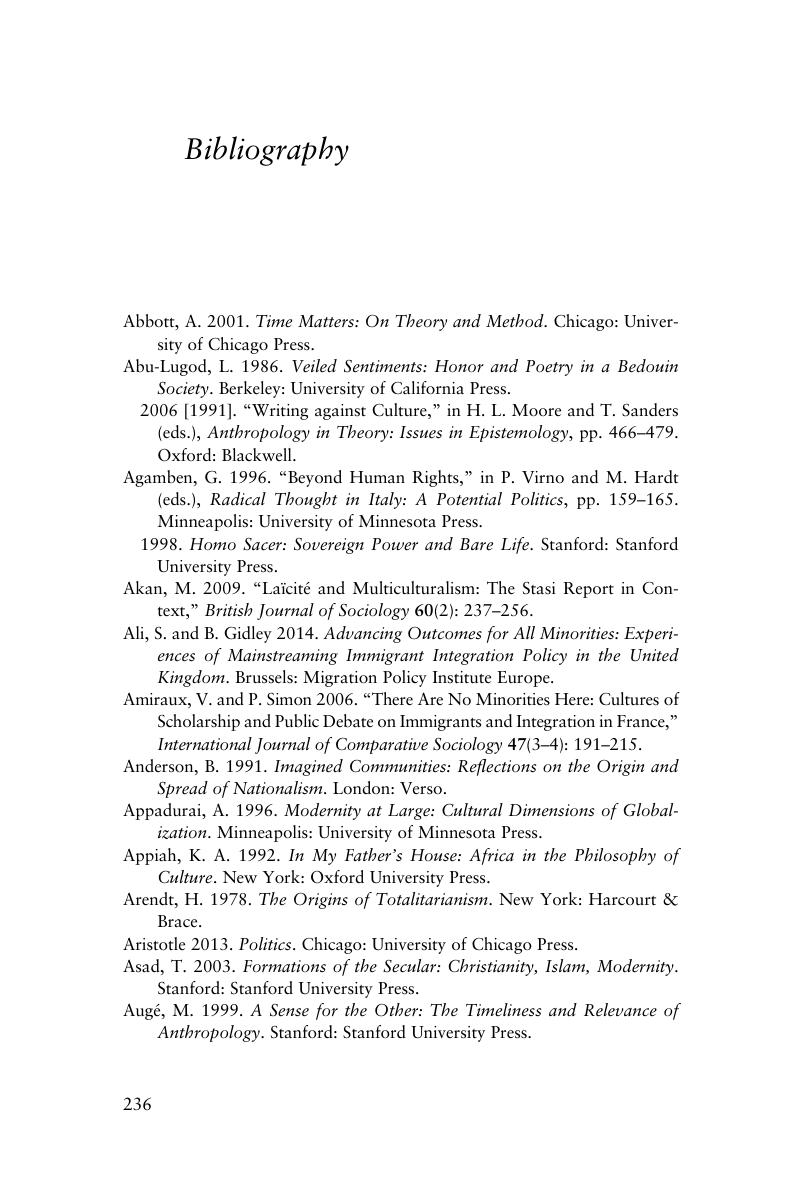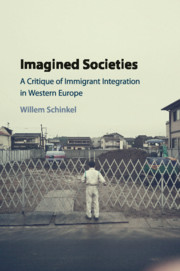Book contents
- Imagined Societies
- Imagined Societies
- Copyright page
- Contents
- Acknowledgments
- 1 Immigrant Integration Imaginaries in Western Europe
- 2 Imagining Society: Social Theory and/as Social Imagination
- 3 Measuring Society: Moral Monitoring and the Social Science of “Immigrant Integration”
- 4 Transformations of Racism and the Rise of Culturism
- 5 Traditionally Modern: Contemporary Frameworks of Sexuality and Religion
- 6 The Uses of Citizenship
- 7 Social Science: Between Moral Monitoring and Public Sociology
- Bibliography
- Index
- References
Bibliography
Published online by Cambridge University Press: 09 March 2017
- Imagined Societies
- Imagined Societies
- Copyright page
- Contents
- Acknowledgments
- 1 Immigrant Integration Imaginaries in Western Europe
- 2 Imagining Society: Social Theory and/as Social Imagination
- 3 Measuring Society: Moral Monitoring and the Social Science of “Immigrant Integration”
- 4 Transformations of Racism and the Rise of Culturism
- 5 Traditionally Modern: Contemporary Frameworks of Sexuality and Religion
- 6 The Uses of Citizenship
- 7 Social Science: Between Moral Monitoring and Public Sociology
- Bibliography
- Index
- References
Summary

- Type
- Chapter
- Information
- Imagined SocietiesA Critique of Immigrant Integration in Western Europe, pp. 236 - 259Publisher: Cambridge University PressPrint publication year: 2017



